Day 21, Saturday, April 4 – Salad Sanity
You’re going to need a Caesar salad sometime during this shutdown, so you might as well learn how to make a proper one.
Like all things simple and exquisite, the difference between passable and preeminent is in the particulars.
This will not be your typical recipe. It will be an essay on salad excellence. Read carefully; go slowly. Forget everything you know or think you know about Caesar salads.
This is the only recipe you need. It hews closely to the original but is not note-for-note. When you’re done you will have a thing of beauty that can honestly said to be a real Caesar salad, not the lame imitations you get in 95% of the restaurants in America.
Step 1: Tear two heads of well-washed and dried Romaine lettuce leaves into a large wooden bowl
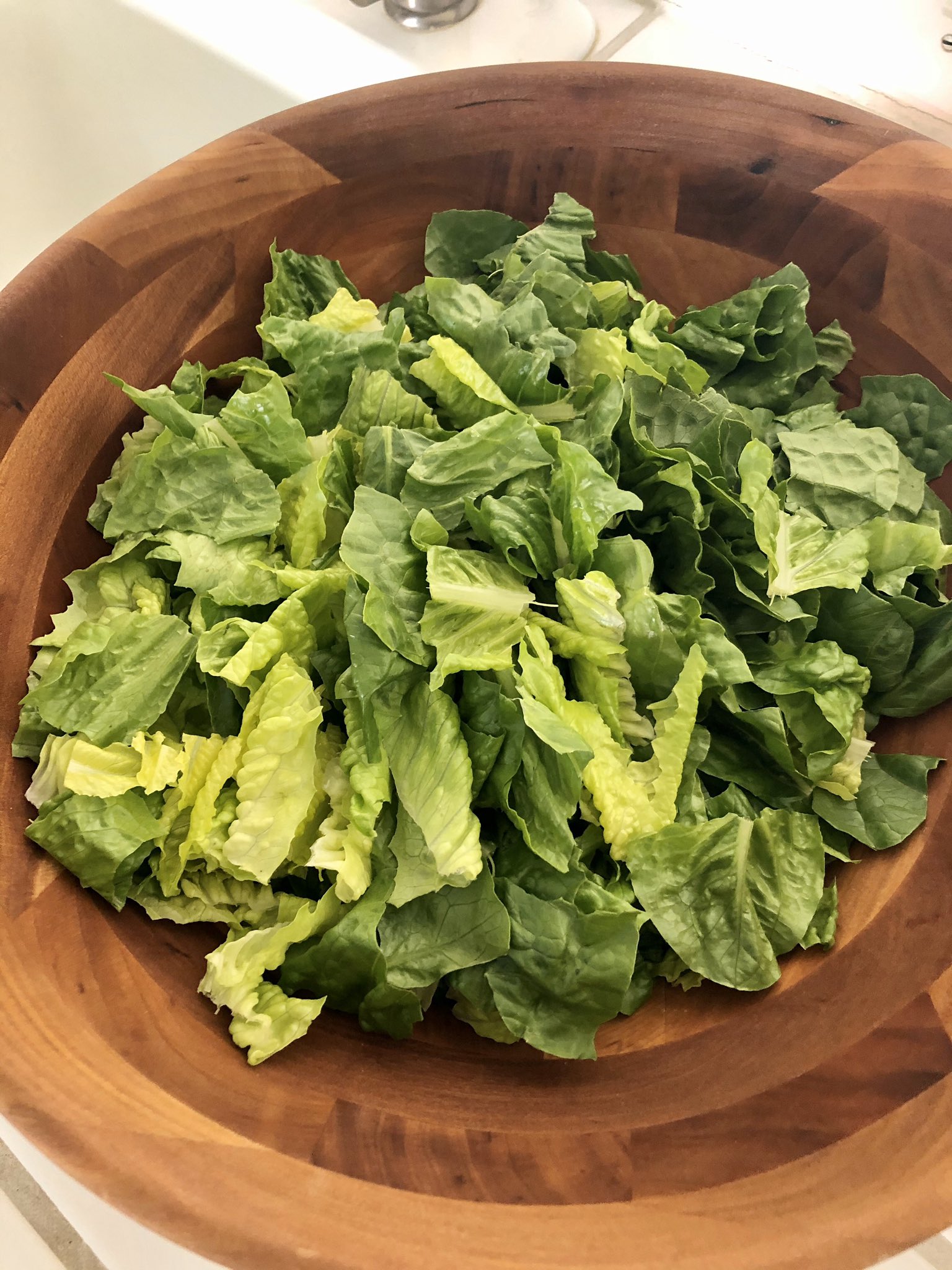
The leaves should be torn into large pieces. Anal retentive cooks remove the greens from the ribs, but the crunch of the ribs is really essential. The original Caesar was probably made from the smaller, firmer ribs in the center of the Romaine head. This is what Julia Child used in her “original” recipe in one of her early cookbooks. More recent video from Caesars Hotel in Tijuana show big-ass long flat leaves being used. (The salad in the video looks horrid, btw. More on this later.)
The problems with long flat leaves are too numerous to count. To begin with, they’re a bitch to eat. You have to cut them; dressing flies everywhere; you need a bib to enjoy yourself. Secondly, they eliminate all visual appeal — it looks like is someone just threw long-ass lettuce leaves on your plate.
Many claim the original salad was made to be eaten with the fingers, hence the huge flat leaves being served today. This assertion doesn’t pass the smell test…unless you’re a lazy restaurateur trying to justify why you’re not bothering to tear lettuce leaves into edible sizes.
42 years of research have led to two conclusions: the “original” may have used much smaller, inner Romaine ribs, but by the 1950s, Alex Cardini (the inventor who named it after his brother Caesar), was telling people to tear the Romaine into large, bite-size pieces — the better to hold the dressing and thus, the piquancy which made the salad famous. Whatever they’re doing at Caesar’s restaurant looks more like cost-cutting than anything else.
The wooden bowl is essential. Don’t even think of using anything else.
If you don’t have a wooden salad bowl, any large one will do. Better too large than too small.
Step 2: Correct Croutons
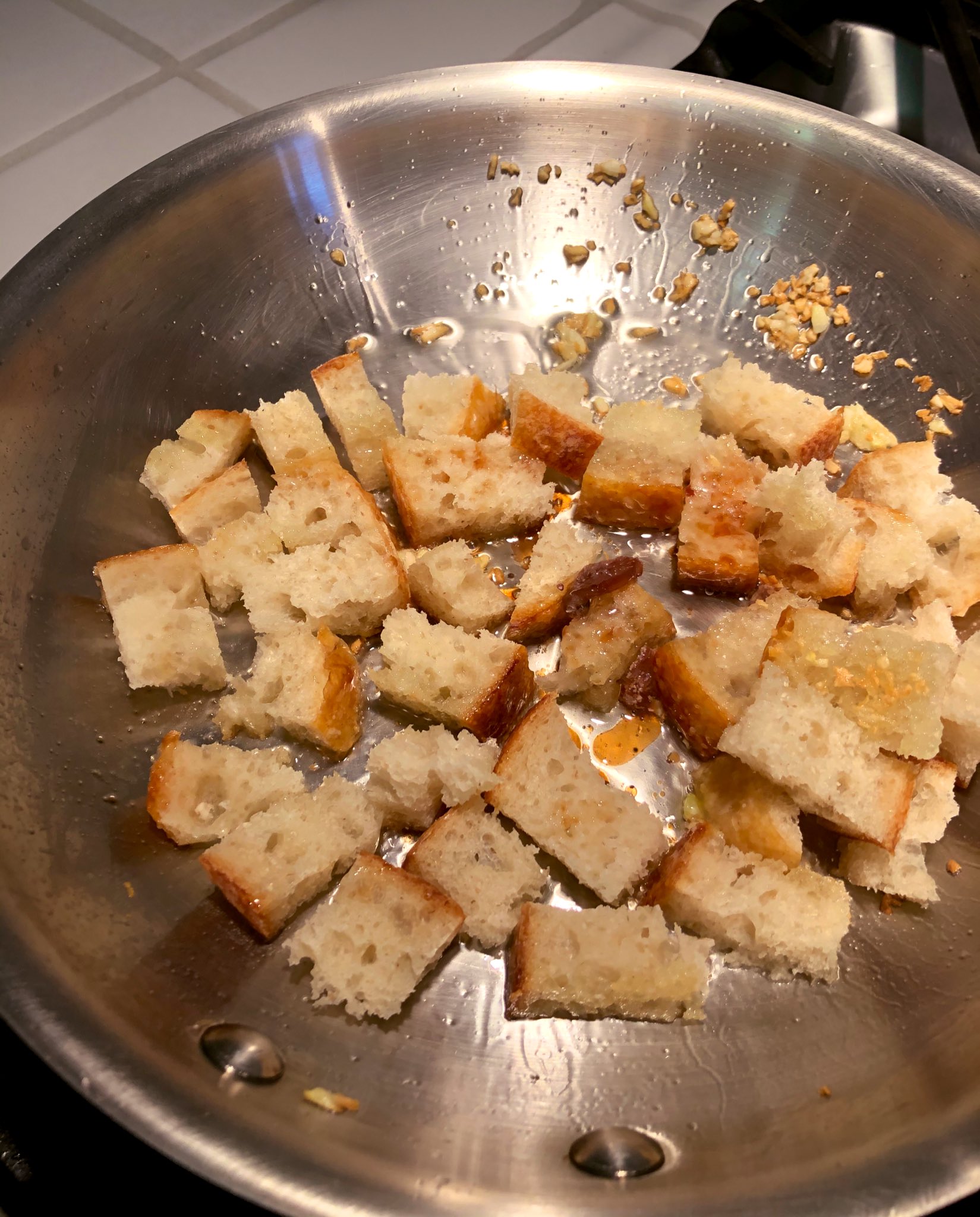
Good croutons are as essential to a good Caesar as a toga or being knifed to death by sixty of your best friends.
There are several ways to make garlic croutons — dip already toasted cubes in garlic oil, fry the bread in garlic oil, or smear the bread with garlic paste, then toast it in the oven — but the horse’s mouth (Alex Cardini) was quoted in a 1976 cookbook (Entertaining With Wine – Ruth Ellen Church), as advocating toasting the large cubes of the bread, then dipping them in garlic oil, then spreading them with either anchovy paste or chopped anchovies. (Note: this is the only time in the “original” Caesar recipe that garlic and anchovies are mentioned.)
This same recipe mentions the croutons should be large, and about 4 per salad serving. It says nothing about just plopping a large slice of French bread on top of awkward-ass lettuce leaves.
To begin: slice some slightly-less-than-fresh French bread. (Good white sandwich bread can also be used.) You want your croutons crispy on the outside, with the barest hint of give and softness within. Hard-as-rock croutons are the sign of an amateur, or worse, store-bought. (Guilty admission: the person typing these words has used store-bought croutons on occasion. For this he is deeply ashamed.)
The croutons should be inch-to-inch-and-a-half rectangles, but don’t despair if they are irregular in shape. The main thing is, they shouldn’t be too small or big thick slices of lame-ass bread thrown on top of the salad.
Finely mince two fat garlic cloves. You do this by first smashing the cloves, then mincing them. Put them in the best, freshest olive oil you can afford (heated on low heat in a pan) for a couple of minutes, but be careful not to let them brown. Here’s where things get tricky. You can now lightly fry the bread in the garlic olive oil over low-moderate heat, but you have to watch it very carefully to make sure the garlic never gets past the barely-brown stage. This takes time and patience. An alternative method is to remove the garlic after it’s done its work perfuming the oil, and then fry the bread over higher heat without fear of burning the garlic. Or you can simply dip your toasted croutons in garlic oil (as noted above) and leave it at that.
Step 3: The Anchovy Question
Alex Cardini said each crouton should be spread with a schmear of anchovy paste. So does his granddaughter. Although she defaults to that big slice nonsense for croutons, and he is quoted as saying they should be smaller cubes or rectangles. However you like your bread-y salad accoutrements, we now agree they should have some anchovy paste on them. Or can we?
John Mariani, in his American Dictionary of Food and Drink says “no anchovies in the original” because Caesar Cardini disliked them (“argued against the inclusion of anchovies”), but that they “evolved” into the salad over time.
James Beard was such an anchovy aficionado he put 24(!) of them chopped into the dressing for a salad for six. Mexican food maven Diana Kennedy interviewed Alex Cardini Sr. (the brother who claimed he invented it) shortly before he died, and adds six of the little suckers to a garlic-anchovy paste to spread on the croutons.
These disputations have all the elements of a long-simmering family feud (akin to who was the Original Famous Ray?) to which you should brook no attempts to sway you to one camp or the other. Anchovies have indeed evolved into the recipe and are part of the salad today, no matter what history seems to argue.
When it comes to your salad, you will want to either do the schmear thing, or mash up a few of them in the bottom of the salad bowl, or do both. Some people like to strew a few on top of the salad. These persons are called enlightened, impeccable epicureans of the highest moral order.
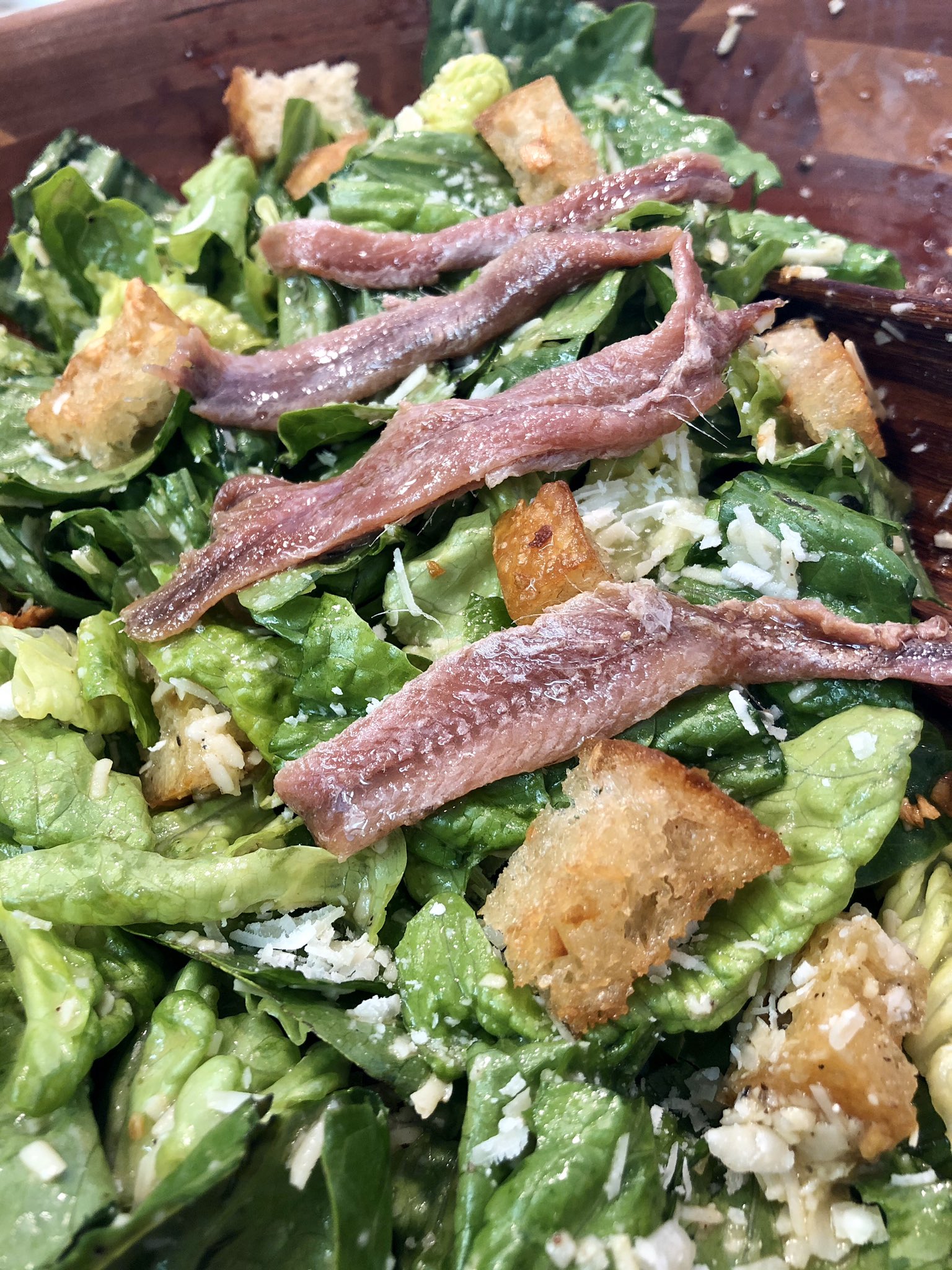
Step #4 – Grate Expectations
Your cheese should be grated Parmigiano-Reggiano cheese — the most expensive you can afford. You should grate it fresh on a box grater, on the smallest setting. (No microplaning! A Microplane cheese grater is great for some purposes — like grating cheese for melting — but its wispy strands make cheese taste like air, denuding it of all pungency. If you microplane your cheese, you might as well go get a chicken Caesar at Applebee’s. Okay, not really, but there IS a taste difference, so get a good, old-fashioned box grater.)
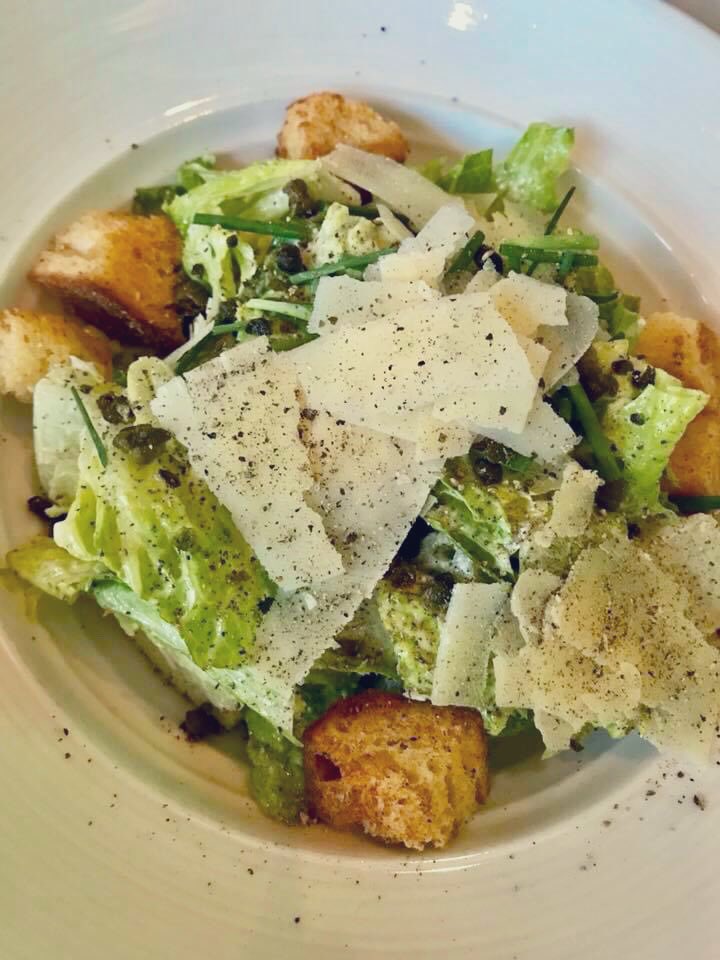
For variety and a little flair, you can also grate your cheese into shards or shingles to dress the top of the salad…because no one, ever, has complained that there was too much Parmesan cheese in a Caesar salad.
Step 5: Dressing Up
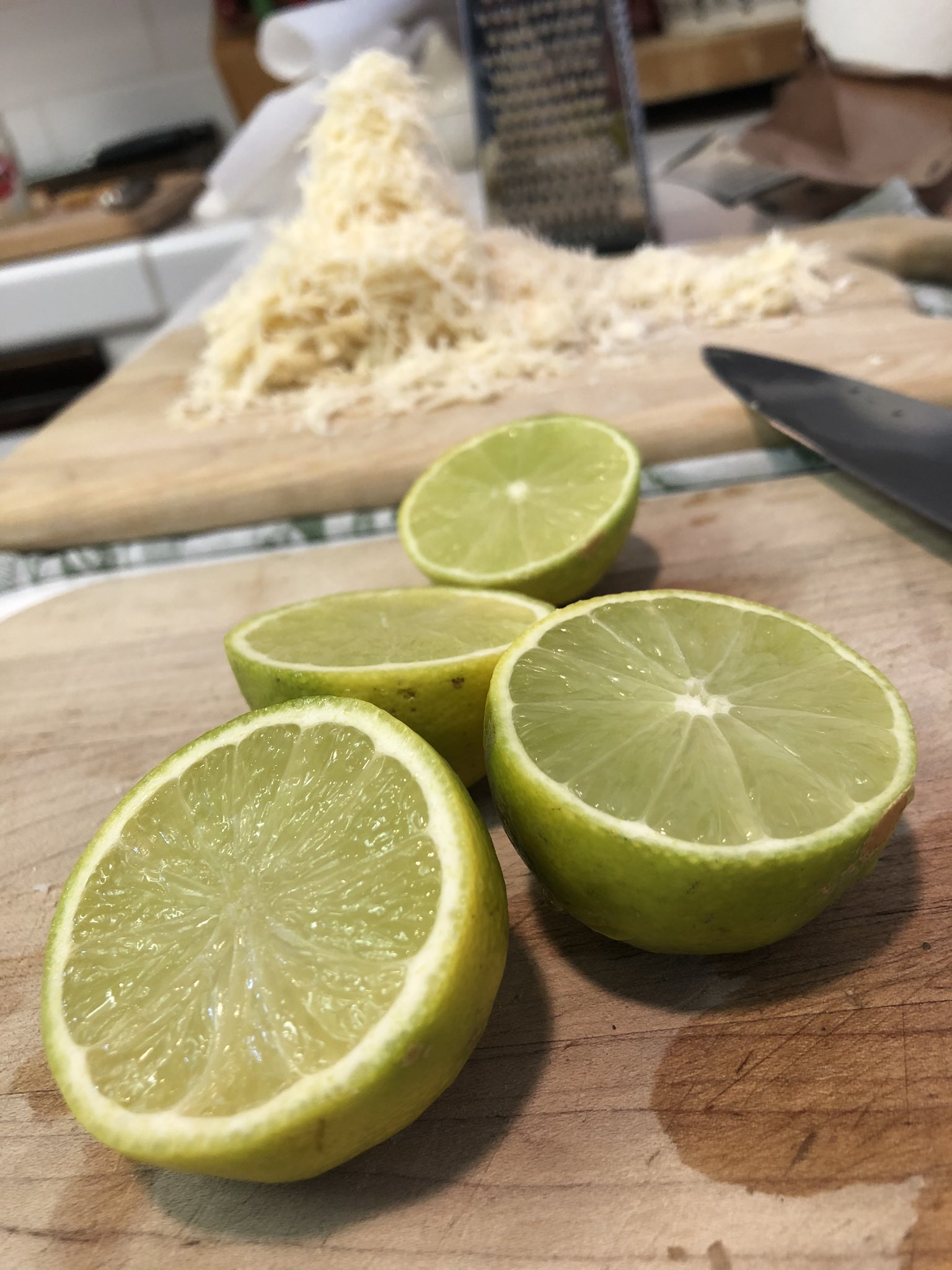
Limes not lemons. But lemons are fine. Great Caesars have pungency and citric bite. Do not skimp on the juice but don’t overdo it. Two juicy fruits should do for a salad for four, but have one in reserve just in case.
Mustard may be used at Caesar’s in Tijuana, but it’s another restaurant shortcut and a no-no . No recipe claiming to be the “original” lists it; it ruins the delicate balance of cheese, oil, acid and pepper, so don’t even think of it. Restaurants use it to ease the emulsion. The same ones who don’t like to tear their lettuce leaves.
Coddle two eggs. Some pugnacious purists claim they should be raw, but any home cook worth their salt knows a short, hot bath makes the yolks stickier, and stickier is what you seek.
Have a bottle of good old Lea & Perrins Worcestershire sauce at hand. A good healthy tablespoon-full adds immensely to the umami.
Be ready to grind on a butt-load of black pepper. And a few sprinkles of salt.
Step 6: Getting Your Salad Tossed
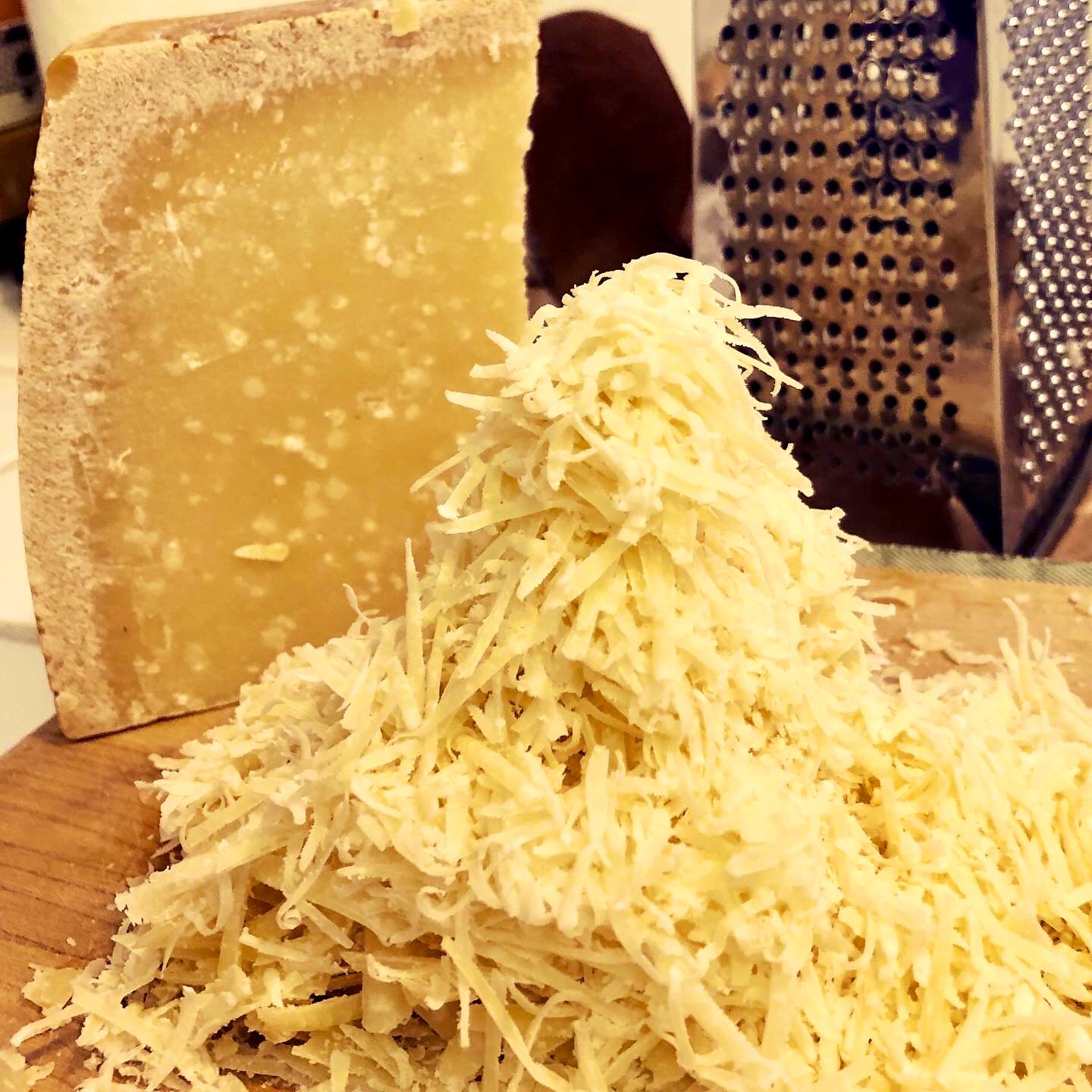
Now the fun starts. It’s easier than you think, but attention must be paid.
None of that bottom-of-the-bowl mixing shit here. What you seek is a layering of oil, eggs, juice, cheese and Worcestershire into an ethereal emulsion on the leaves themselves.
Making a big show of creating the dressing in the bottom of the bowl misses the whole point. Only through careful tossing of first the olive oil (to coat the leaves), then the egg (which thickens on the leaves with the oil), followed by the tang of citrus mixing with both of them, the Worcestershire adding a lagniappe of sweet-sour, topped off with top-shelf cheese and pepper sticking to the whole shebang.
It all comes together as you toss each individual ingredient upon the other. And toss you will for a full 30 seconds or so after each addition. The croutons can be thrown in before, during or after all the mixing starts, according to taste. When the cheese hits the thickly coated leaves, something magical takes place….and you can take a bow.
Once these techniques are mastered, never again will you be satisfied with a sub-par Caesar. For all but your salad, you will come to bury not to praise them. For, bear with me, this is an honorable Caesar; you all did love it once, not without cause, and my heart is in the coffin there with what restaurants have done to poor Caesar, and I must make my own till they come back to me.
Here is the recipe that started our Caesar salad quest 43 years ago. It’s a bit heavy on the garlic and the eggs (4 eggs for two heads of Romaine is absurd), and a bit light on the croutons, but the bones of a great one are in there:
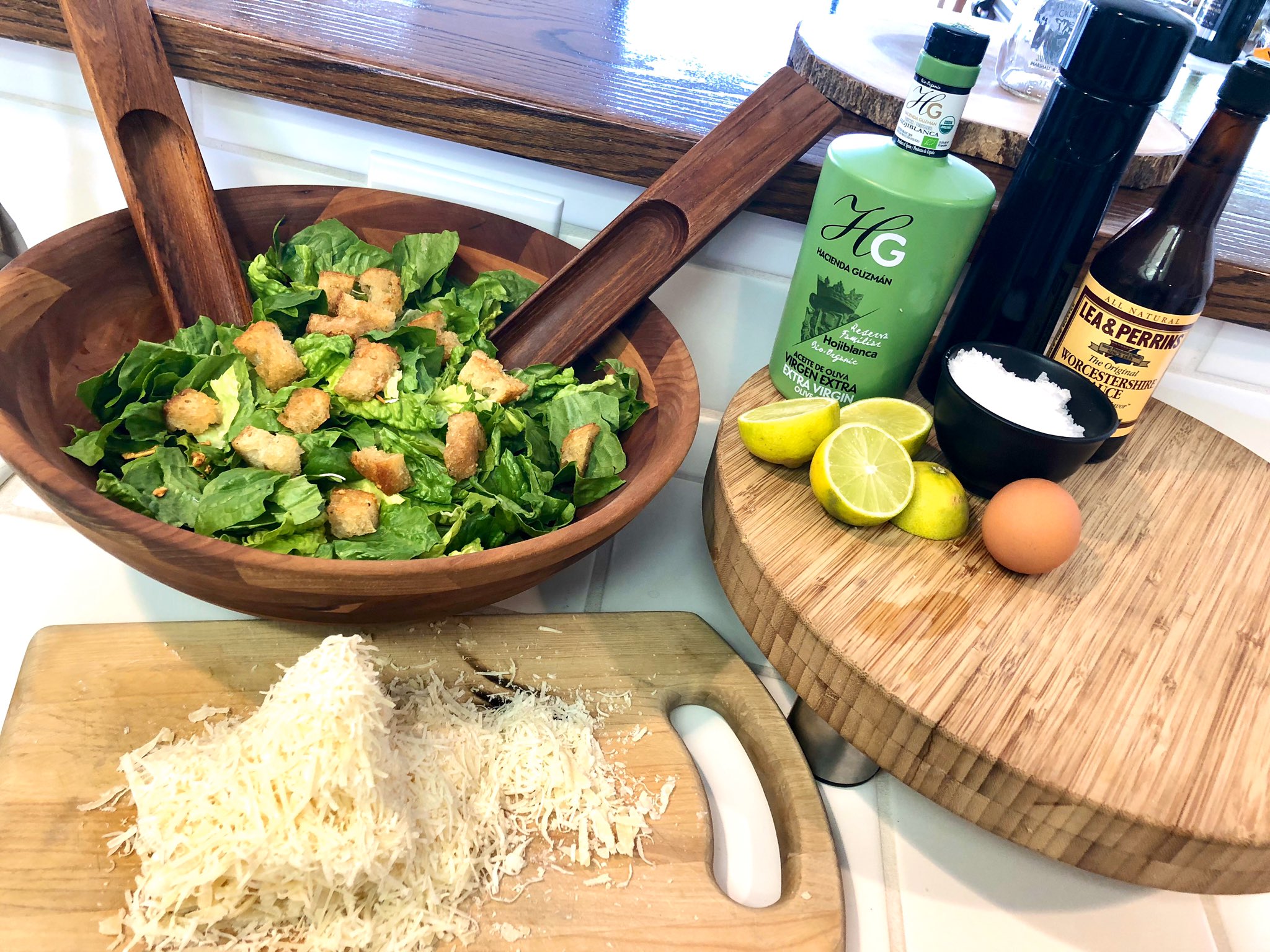
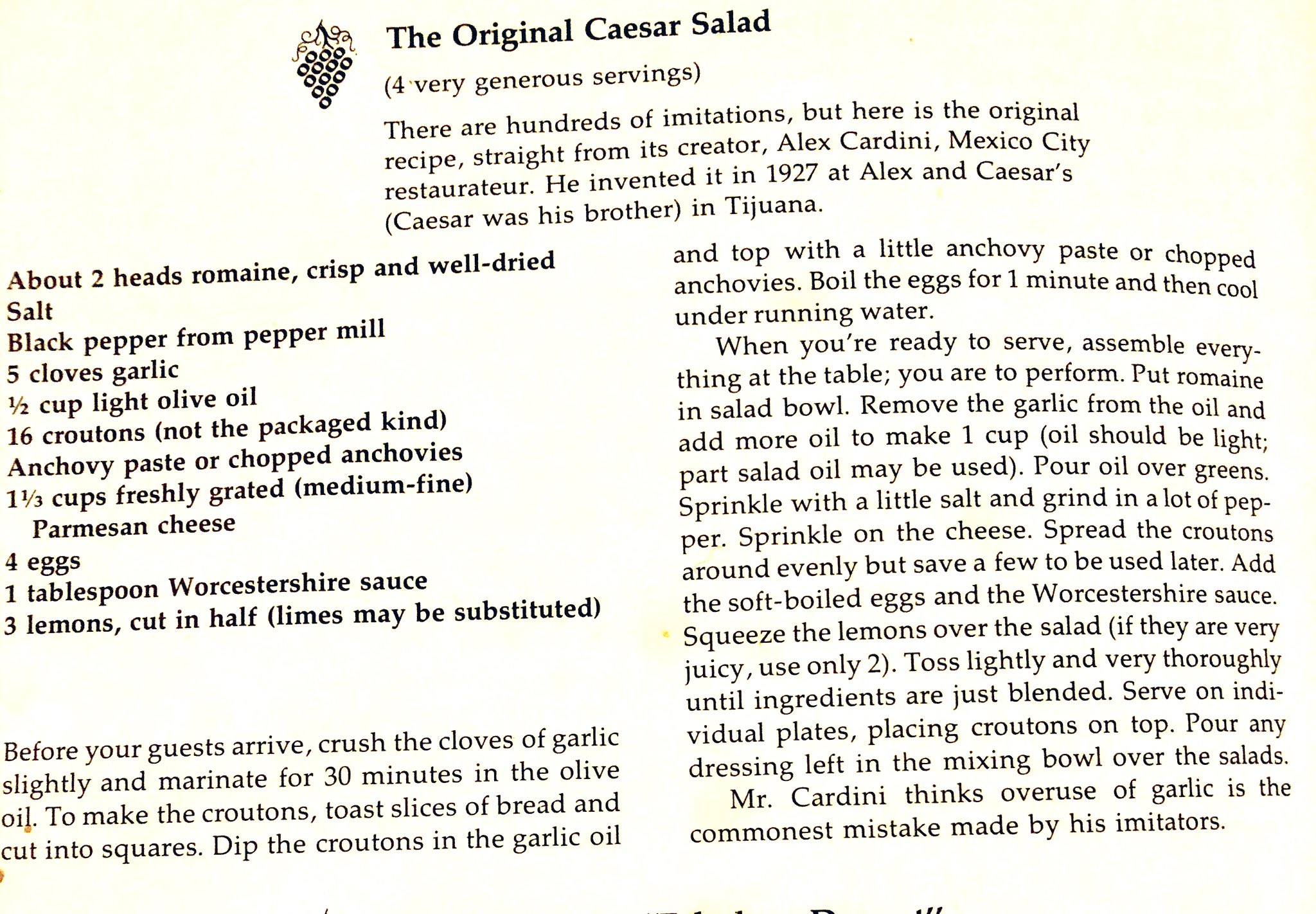
Nicely done John, but just curious, how long does it take to make, and is there a restaurant out there that still makes a good one?
Cheers,